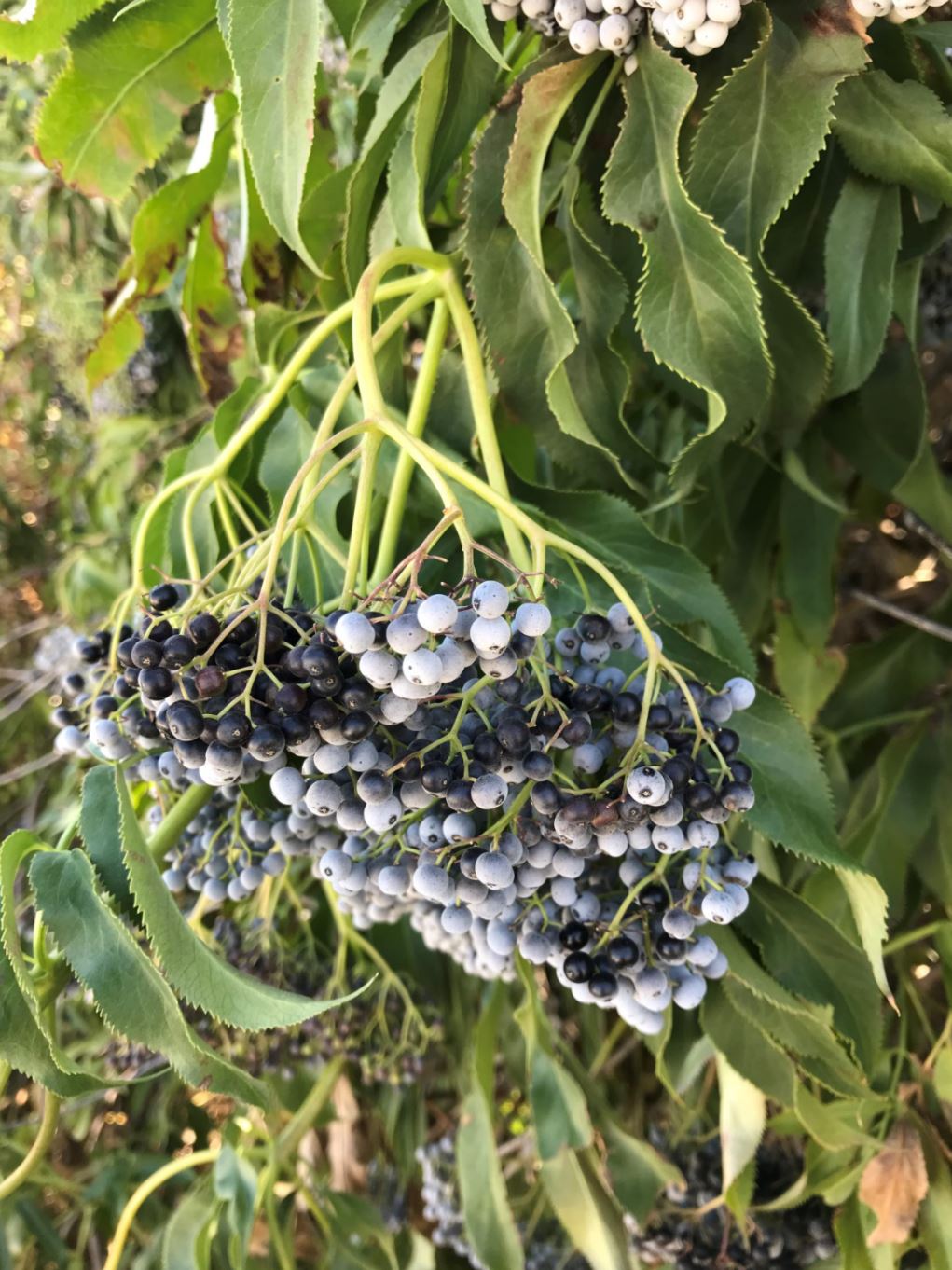Field-edge perennial hedgerows can provide significant environmental benefits to farms and their surrounding environments, including natural pest control and pollination services, improved soil health, water quality buffers, and carbon sequestration (Long et al. 2017, Smukler et al. 2010). However, hedgerows of native perennials can be costly to install and maintain during the first few establishment years, with installation costs typically running from $3,000 to $4,000 per 1,000 linear feet for 10-ft wide hedgerows in California. Although state and federal programs provide cost-share incentives, hedgerows still appear relatively infrequently on intensive, high-value agricultural landscapes like those in the Central Valley of California.
Farmers and landowners typically do not think of hedgerows as providing a direct income, but rather as providing only indirect benefits through ecosystem services. In a 2.5-year project, we sought to demonstrate a new role for hedgerows – one in which they can produce a marketable crop at the same time as providing ecosystem services. Blue elderberry (Sambucus nigra, ssp. cerulea), is a subspecies of the better-known European and North American black elderberries, and grows robustly in many areas of the West, from near sea level to 10,000 ft in elevation (Figure 1). Although it is a riparian species, it appears to be much more drought-tolerant than black elderberries, and can grow well in the summer-dry Mediterranean-type climate of much of California, with minimal, and, in some areas, no irrigation inputs once mature. Blue elderberry is already a common species included in multi-species native hedgerows (Figure 2), but only a few small-scale farms in California are known to harvest and utilize it for value-added products. Blue elderberry has been an important component of Native American diets in California since long before Euro-American settlement, and provides important ceremonial materials as well.

 Figure 2. Large blue elderberry (center) in field-edge hedgerow. Photo by Sonja Brodt.
Figure 2. Large blue elderberry (center) in field-edge hedgerow. Photo by Sonja Brodt.
Our research team recently completed a field trial in the southern Sacramento Valley (part of the larger Central Valley) to assess the profitability of blue elderberry production in multi-species hedgerows (Brodt et al. 2020). We worked with three organic farms that implemented three distinct planting designs: 1) a wide, multi-species hedgerow with elderberries comprising approximately 15% of total plant numbers, 2) a closely-spaced (6-ft) elderberry-only hedgerow placed against a narrow pre-existing habitat strip, and 3) elderberries widely interspersed in a mature border habitat strip. We found that with good weed control (accomplished by extensive mulching) and soil preparation, elderberry yields from a 1,000 ft hedgerow could provide $2,700 to $4,800 in revenue, net of harvest and de-stemming costs, in only the second year after hedgerow planting, essentially paying for establishment costs. However, our trial also showed that competition from weeds or other mature plants can slow growth and delay this break-even point until at least a few years later. Exploratory harvest of very large, mature blue elderberries already in the landscape showed that potential gross future revenue possibilities could range in the tens of thousands of dollars from a 1,000 ft hedgerow, at current prices for frozen, destemmed elderberries (Midwest Elderberry Cooperative, 2020). Value-added processing and specialty products made on-farm could further increase overall profitability. Participating farmers found that one of the primary bottlenecks to increasing production is the labor-intensiveness of hand harvest and especially de-stemming of the berries. Our team is exploring options for mechanized de-stemming as used in the midwestern elderberry industry.
Our team also surveyed elderberry buyers to assess marketing potential. Consumer demand for elderberry-based products (Figure 3) has skyrocketed in recent years (Smith et al. 2019). While there is currently no large-scale infrastructure or standardization of quality parameters for blue elderberry, we found substantial interest from small-scale buyers and potentially also larger retailers. Two-thirds of surveyed herbal and specialty foods processors and retailers were strongly interested in sourcing California-grown elderberries and could not find enough supply to meet their needs. Farmers who grow blue elderberry can tap into this growing market.

To learn more about this research and to find educational resources for cultivating, processing, and marketing elderberry, visit https://ucanr.edu/sites/Elderberry.
References:
Brodt S, Fyhrie K, Stewart D, Sumner DA (2020) Sample costs to establish blue elderberry in a multi-species hedgerow with tillage, Sacramento valley. https://coststudyfiles.ucdavis.edu. Accessed 2 November 2020
Long R, Garbach K, Morandin LA. (2017) Hedgerow benefits align with food production and sustainability goals. California Agriculture 71 (1):117-119.
Smith T, Gillespie M, Eckl V, Knepper J, Reynolds CM (2019) Herbal supplement sales in US increase by 9.4% in 2018. HerbalGram, 123:62-73
Smukler SM, Sánchez-Moreno S, Fonte SJ, Ferris H, Klonsky K, O’Geen AT,
Scow KM, Steenwerth KL, Jackson LE. (2010) Biodiversity and multiple ecosystem functions in an organic farmscape. Agric Ecosyst Environ 139: 80-97.
